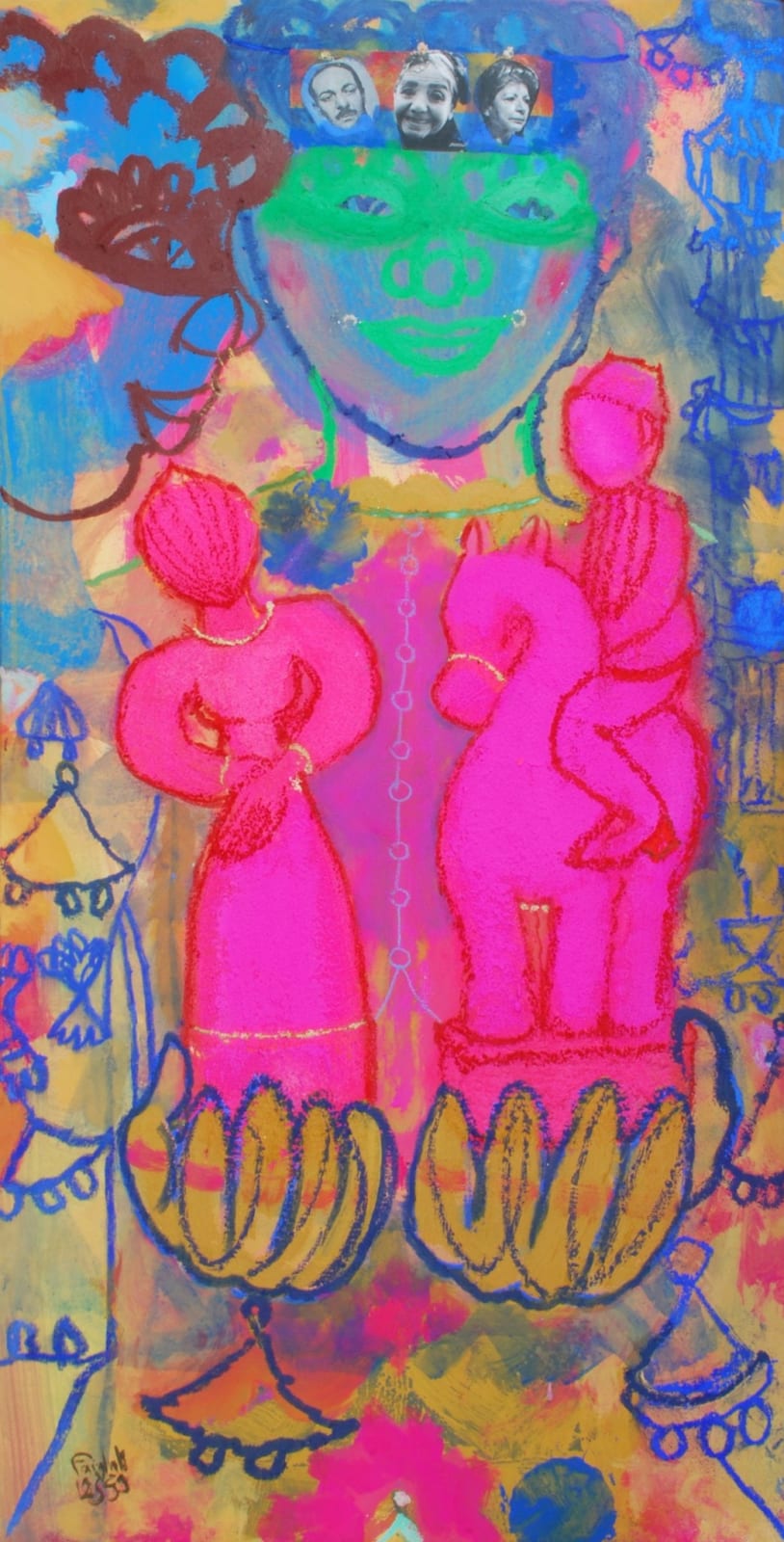Farghali Abdel Hafiz b. 1941
Fountains of Art, 2012
Acrylic, oil stick and sand on canvas laid down on board
120 x 60 cm
47 1/4 x 23 5/8 in
47 1/4 x 23 5/8 in
Copyright The Artist
This work incorporates photographs of Mahmoud Mokhtar, a sculptor considered the father of Modern Egyptian art, and two prominent female painters- Tahia Halim and Inji Efflatoun. The work of Mahmoud...
This work incorporates photographs of Mahmoud Mokhtar, a sculptor considered the father of Modern Egyptian art, and two prominent female painters- Tahia Halim and Inji Efflatoun.
The work of Mahmoud Mokhtar (1891-1934) had an enormous impact on modern and contemporary Egyptian art. He pioneered a neo-Pharaonic style which combined Egyptian and Western elements. His famous statue, Nahdit Misr (Egypt's Renaissance) which was initially unveiled in Ramses Square in 1928 and now stands opposite the Cairo University Bridge.
Born in Sudan to an aristocratic family, Tahia Halim (1919-2003) was an Egyptian painter and a pioneer of the Modern Expressive Movement in the Egyptian Art in the 1960s. She excelled in expressing the Egyptian character’s idiosyncrasies in her works, and is known especially for her depictions of the Nile, painted after a trip to Nubia in 1962, before much was submerged following the construction of the Aswan High Dam.
Inji Aflatoun (1924–1989) was an Egyptian painter and activist in the women's movement. She was a leading spokesperson for the Marxist-progressive-nationalist-feminist spokeswoman in the late 1940s and 1950s as well as a pioneer of modern Egyptian art.
The work of Mahmoud Mokhtar (1891-1934) had an enormous impact on modern and contemporary Egyptian art. He pioneered a neo-Pharaonic style which combined Egyptian and Western elements. His famous statue, Nahdit Misr (Egypt's Renaissance) which was initially unveiled in Ramses Square in 1928 and now stands opposite the Cairo University Bridge.
Born in Sudan to an aristocratic family, Tahia Halim (1919-2003) was an Egyptian painter and a pioneer of the Modern Expressive Movement in the Egyptian Art in the 1960s. She excelled in expressing the Egyptian character’s idiosyncrasies in her works, and is known especially for her depictions of the Nile, painted after a trip to Nubia in 1962, before much was submerged following the construction of the Aswan High Dam.
Inji Aflatoun (1924–1989) was an Egyptian painter and activist in the women's movement. She was a leading spokesperson for the Marxist-progressive-nationalist-feminist spokeswoman in the late 1940s and 1950s as well as a pioneer of modern Egyptian art.
Join Mailing List
Thank you for signining up to Lawrie Shabibi. Please note that at the moment we are not accepting any artist submissions.
* denotes required fields
We will process the personal data you have supplied in accordance with our privacy policy (available on request). You can unsubscribe or change your preferences at any time by clicking the link in our emails.
